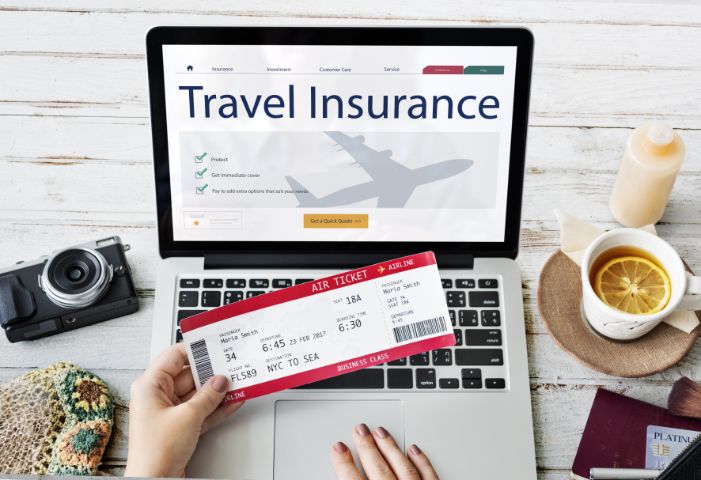Travel insurance can provide peace of mind when you embark on a trip, protecting you from unexpected events such as cancellations, medical emergencies, lost luggage, and more. However, purchasing travel insurance can feel overwhelming due to the variety of plans and coverage options available. To ensure you make an informed decision, it’s essential to understand the key factors before purchasing travel insurance.
This article will guide you through everything you need to know about travel insurance, so you can choose the best plan for your needs and avoid unnecessary confusion or expenses.
1. Understand What Travel Insurance Covers
Travel insurance typically includes a range of coverage options that can protect you against unforeseen circumstances. Here’s a breakdown of the common types of coverage provided:
A. Trip Cancellation and Interruption Coverage
This type of coverage reimburses you for prepaid, non-refundable trip expenses if you need to cancel or cut your trip short due to covered reasons such as illness, injury, or family emergencies.
- Example: If you need to cancel your flight or hotel booking because of a sudden medical emergency, this coverage would refund the costs you incurred.
B. Medical and Emergency Evacuation Coverage
If you’re traveling internationally, your health insurance might not cover medical expenses. Travel insurance with medical coverage can help pay for doctor visits, hospital stays, or even medical evacuations if you become ill or injured while abroad.
- Example: If you break your leg while hiking in another country, medical travel insurance would cover the cost of your treatment and possibly even arrange transportation back home if needed.
C. Lost, Stolen, or Damaged Luggage
This coverage helps reimburse you if your luggage is lost, stolen, or damaged during your trip. It also covers personal items such as electronics, clothing, and valuables.
- Example: If your luggage is lost by the airline, this coverage would reimburse you for the items you need to replace immediately, such as toiletries or clothing.
D. Flight Delay or Missed Connection Coverage
In the event of a flight delay or missed connection, this coverage can reimburse you for additional costs such as meals, accommodation, and transportation while you wait for your rescheduled flight.
- Example: If a weather delay causes your flight to be canceled, you may be eligible for reimbursement for additional meals and hotel stays while you wait for a new flight.
E. Travel Assistance and Concierge Services
Many travel insurance policies include 24/7 travel assistance, providing you with help for things like finding medical care, replacing a lost passport, or making travel arrangements in case of an emergency.
- Example: If you lose your passport during your trip, the insurance provider can assist you with getting a replacement quickly so you can continue your travels.
2. Know What’s Not Covered
While travel insurance can offer substantial protection, there are several exclusions that you should be aware of. It’s essential to read the fine print of any policy to understand the limits and exclusions.
A. Pre-Existing Conditions
Many travel insurance policies exclude coverage for pre-existing medical conditions. If you have a health condition that requires treatment while traveling, you may not be covered unless you purchase a specific waiver or policy add-on.
- Example: If you have diabetes and need medical treatment for a related issue while abroad, a standard policy might not cover it unless you have purchased extra coverage for pre-existing conditions.
B. High-Risk Activities
Certain high-risk activities, such as extreme sports, scuba diving, or mountaineering, may not be covered under standard travel insurance. If you plan to engage in these activities, ensure that you have purchased special coverage for them.
- Example: If you’re planning to go bungee jumping or skydiving, you might need to buy additional coverage or a policy that includes these high-risk activities.
C. Acts of War or Terrorism
Most travel insurance policies do not cover losses caused by acts of war or terrorism, although some plans may offer limited coverage in certain situations. Always check the policy to determine whether or not these events are included.
- Example: If your destination is affected by a terrorist attack, your travel insurance may not cover trip cancellation or evacuation, unless you have a specialized policy.
D. Changes in Travel Plans Due to Personal Preferences
Travel insurance typically doesn’t cover cancellations or interruptions due to changes in personal preferences or decisions. For example, if you decide not to go on the trip because of a change in mood or personal reasons, it won’t be reimbursed.
- Example: If you change your mind about traveling to a destination but no emergency occurs, your travel insurance likely won’t cover the cost of your cancellation.
3. Consider the Level of Coverage You Need
Not all travel insurance policies are created equal. Some provide basic coverage, while others offer more extensive protection. Here’s how to determine what level of coverage you may need:
A. Destination
If you’re traveling to a foreign country, especially one with higher medical costs, you might want to invest in comprehensive coverage that includes emergency medical evacuation. For domestic trips, you might not need as much medical coverage but may still want to include coverage for trip cancellation, lost luggage, and delays.
- Example: If you’re going to Europe, where healthcare can be expensive for non-citizens, you may need more comprehensive medical coverage compared to a trip within the United States.
B. Length of Your Trip
For longer trips, especially those that last several weeks or months, you may need a more robust policy to cover extended periods. On the other hand, short weekend getaways might only require basic coverage.
- Example: A month-long backpacking trip across Southeast Asia may require more extensive coverage, including emergency medical evacuation, while a short business trip may only need trip cancellation and lost luggage coverage.
C. Travel Type
Consider the type of trip you’re taking. Are you traveling for business, leisure, or adventure? Business trips might require specific coverage for canceled meetings or lost work-related items, while adventure vacations may need additional coverage for activities like hiking or skiing.
- Example: If you’re going on a hiking expedition in the mountains, you might need additional coverage for emergency evacuation and medical emergencies related to outdoor activities.
4. Check for Coverage Limits and Deductibles
Travel insurance policies typically have coverage limits and deductibles, so it’s important to understand these terms before purchasing. A coverage limit is the maximum amount the insurance company will pay for a claim, while a deductible is the amount you have to pay out of pocket before the insurance kicks in.
- Example: If your policy covers lost luggage up to $1,000 and you have $500 worth of items lost, you would only be reimbursed for $500 if you have a $500 deductible.
Be sure to choose a policy with coverage limits that match the value of your trip and personal belongings. For instance, if you’re traveling with high-end electronics or expensive clothing, ensure your policy has an adequate coverage limit to reimburse you in case of loss or damage.
5. Read the Fine Print and Understand the Terms
Reading the fine print of your travel insurance policy is crucial to understanding what is and isn’t covered, as well as the specific requirements to file a claim. Pay close attention to exclusions, coverage limits, and conditions, as these can vary widely between providers.
- Example: Some policies may require you to notify the insurance company within a certain time frame (e.g., 24 or 48 hours) of an incident, such as a canceled flight or a medical emergency, to be eligible for reimbursement.
Also, look for any clauses about “non-refundable” expenses, cancellation penalties, or other stipulations that might affect your claim.
6. Compare Providers and Plans
Once you have a good understanding of your needs and the coverage options available, compare different travel insurance providers. Prices can vary significantly based on the coverage, policy limits, and deductibles, so it’s essential to shop around and find the best deal.
A. Reputation and Reviews
When comparing providers, check the company’s reputation and customer reviews. Look for a provider that has good customer service and is known for handling claims efficiently. It’s also a good idea to check whether the provider offers 24/7 support in case of emergencies.
- Example: Look for a travel insurance company with positive feedback on its claims process and responsive customer service, especially in the event of a travel disruption or emergency.
B. Policy Customization
Some insurers allow you to customize your policy with additional coverage options, such as coverage for rental car damage or flight accidents. If you need specialized coverage, be sure to choose a plan that offers these options.
7. Conclusion
Travel insurance is an important investment that can offer financial protection against unforeseen circumstances while traveling. Before purchasing travel insurance, take the time to understand what’s covered, what’s excluded, and the type of coverage you need for your specific trip. By comparing different plans, understanding coverage limits and exclusions, and reading the fine print, you can make an informed decision that provides peace of mind during your travels.

